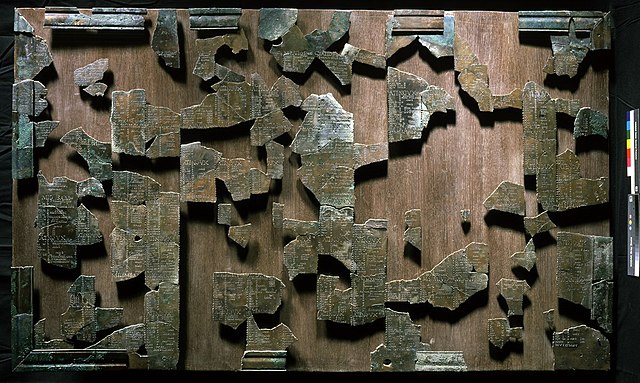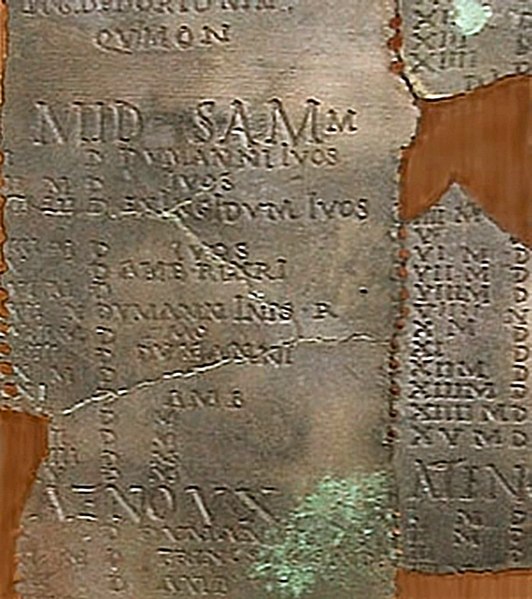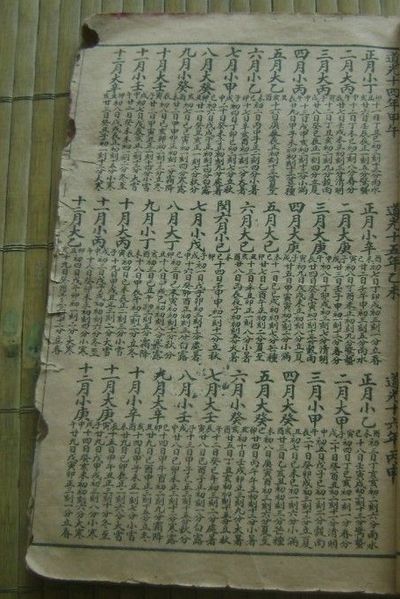The Coligny calendar is a bronze plaque with an inscribed calendar, made in Roman Gaul in the 2nd century CE. It lays out a five-year cycle of a lunisolar calendar, each year with twelve lunar months. An intercalary month is inserted before each 2.5 years. The lunar phase is tracked with exceptional precision, adjusted when necessary by a variable month, and the calendar uses the 19-year Metonic cycle to keep track of the solar year. It is the most important evidence for the reconstruction of an ancient Celtic calendar.
Overview of the re-assembled tablet found in Coligny, France
The god found with the Coligny calendar reconstituted by A. André.
Detail of Samonios (year 1).
Drawing of month 14 (Samonios of year 2) by de Ricci.
A lunisolar calendar is a calendar in many cultures, incorporating lunar calendars and solar calendars. The date of lunisolar calendars therefore indicates both the Moon phase and the time of the solar year, that is the position of the Sun in the Earth's sky. If the sidereal year is used instead of the solar year, then the calendar will predict the constellation near which the full moon may occur. As with all calendars which divide the year into months there is an additional requirement that the year have a whole number of months. In some case ordinary years consist of twelve months but every second or third year is an embolismic year, which adds a thirteenth intercalary, embolismic, or leap month.
Record of the Chinese lunisolar calendar for 1834, 1835, and 1836 during the Qing dynasty under the Daoguang Emperor's Reign (道光十四年,道光十五年,道光十六年)
1729 Japanese calendar, which used the Jōkyō calendar procedure, published by Ise Grand Shrine






